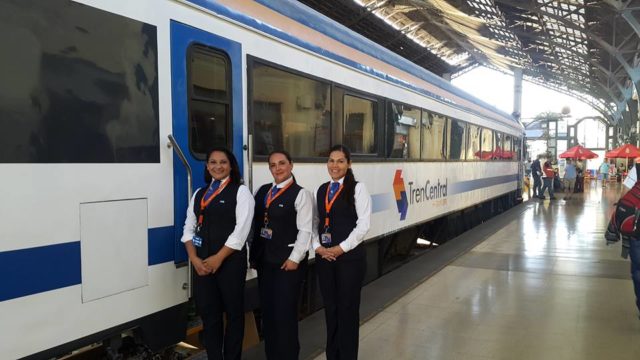New Opportunities in Chile
Experiences of the FFJ Team Buying Real Estate!
We have had some interesting experience buying real estate here in the Southern Cone, to say the least! It is common to investigate a property, decide in its favor, sign a contract to buy at the ask price, and have the owner double the price. We are NOT making that up. It can take a year to negotiate real estate. Not saying that is always the case–just that it is not uncommon.
You offer your best price, the owner says no, then three months later he’s back offering it again at a little ower price and you go through the same procedure. It is a different thought pattern in South America, or so it seems. They don’t hesitate to go up on the price when they see a signed contract.
One of our team who had been involved in real estate in the United States for years was frustrated beyond measure.
We finally did buy a commercial building in Montevideo at a very good price, which we later sold at a nice profit but the thought processes of local sellers here are very different from those to which we were accustomed in the States.
Prices have risen in Uruguay to the point where they have almost doubled in some cases. We think it is in part the result of U.S. people coming in and paying ever higher prices though experts may not agree. But we think it’s a lot better if you go to an area you like, rent with patience until you find a good buy. We have rented here in Buenos Aires, happily, for seven years because our wonderful lawyer, Gabriel Celano, tells us you don’t buy in Argentina now, you wait for the crisis.
And why would he say that? Because sooner or later Argentina always has a crisis and things get very cheap. However they are way overdue now. We see the signs. We believe the inflation rate in Argentina to be about 50% per anum though the government figure is lower. Many citizens of the continent to the north, we believe, are not aware of the effects of excessive government spending on most countries because the U.S. is the world reserve currency. If they print more money than they can tax away from the people they don’t necessarily experience the resulting inflation. They ship their inflation around the world.
Not so Argentina. If they give free college, free medical care, utility subsidies, welfare, and various other benefits, they can’t collect all that in taxes, and if they print out of thin air, THEY don’t have the option to ship that inflation out of the country. Thus they end up with everyone hurting as prices double.
We are not convinced the U.S. will forever be the home of the world reserve currency. China is backing the yuan with gold and expressing plans to back a crypto currency with gold. They are encouraging Chinese citizens to buy gold. And gold is real money, not fiat. Although we are not financial advisers and you should always check with your qualified financial adviser before making any investment, we think Americans should also hold some gold. In fact we don’t consider gold an investment. We consider it insurance.
Although we love Argentina here at FFJ, and we think Uruguay is well worth considering for a second–or primary–home, Chile is the most stable Also it seems to us that the “rule of law” applies more in Chile than any of the other countries in this area..We think the law enforcement is better there. You can probably bribe a police officer in Argentina in lieu of a traffic ticket, but not a good idea to try that in Chile.
Therefore, we are always glad to receive an update on Chile’s economy from our resident real estate investment specialist and developer in Chile, Darren Kaiser. His Path of Development Investment ABCs checklist toward the end of this article gives hints for finding investment real estate, though written with Chile in mind, would be good advice anywhere in the Southern Cone. Here’s Darren:
Chile’s President Inaugurates New Metro Line
in Santiago
Earlier today, Chile’s president inaugurated Santiago’s newest metro line which connects the Cerillus neighborhood in the southwestern part of the city with the Los Leones Metro Station located in Providencia.
The new line (Metro Line 6) includes ten stations, has connections with multiple existing metro lines, and is projected to serve over 1 million regular commuters in the nation’s capital.
Construction on the new metro line began in 2014 but those of you who are long time subscribers very well may have read about Metro Line 6 in the 2013 edition of the Chile Property Investment Black Paper.
Over the last couple of years there has been quite a bit of coverage in local news sources about how property prices have been affected in the area around the new metro line that was just opened today, as well as the new Metro Line 3 which is set to be finished in 2018.
One article, which came out in LaTercera in 2016, states that during the first two years of construction, prices increased between 16% and 44% on average in the immediate areas around the new metro lines.
Another article which came out earlier this year on Tinsa.cl reported a 50% increase in property prices in areas close to the new metro lines in Nuñoa and an 87% increase for properties close to the new lines in Providencia.
While I’m a firm believer in the old adage that “at least 85% of statistics are largely inaccurate,” I would say it’s pretty clear that property prices in the areas around the new metro lines have definitely been increasing at a rate faster than in most other parts of the city.
Unfortunately, just pointing out areas where prices have appreciated nicely in the past doesn’t do us much good. It’s far more important to pick the situation apart, analyze the process in stages, and come away with information that can be useful for making speculations tomorrow, next year, and a decade from now.
The new Metro Line 6 project was originally announced in December of 2009 towards the end of Michelle Bachelet’s first term of office. It was estimated that construction of 10 miles of line along with the new stations would cost around $900 million USD and would be completed by 2014.
Between 2010 and 2013 though, there was still quite a bit of uncertainty as to where the starting and ending points for the new line would be and a number of changes were made to the project.
Plans seemed to be firming up by late 2013 and it was clear that construction was bound to start sometime soon with an estimated completion date set for 2016.
Physical progress in Line 6 actually began in 2014 and finally just a couple hours ago, the new line was opened to the public.
So when was the perfect time to invest in property around Santiago’s new metro lines? Some would say a year or two before these projects were first announced to the public
While it might seem hard to argue with the logic, one thing I’ve learned from studying real estate markets throughout Latin America for the last decade is that just because the government announces a large infrastructure project, it doesn’t necessarily mean that they’re ever going to break ground on it or see it through to completion.
One of the very first positions I ever took in the Chilean real estate market was supposedly going to benefit greatly from the paving of a 20 mile stretch of coastal road in the north of the city of Concepcion (the N-114) Estimated start time for the project way back in 2010? 2011.
How much of this specific road has been paved to date? None.
Sometimes property prices in certain areas will get an initial bump when a new project is announced (or at least sellers become less negotiable on terms) but having personally waited over seven years for a relatively simple road to be paved, I’ve learned to take most things I hear with a grain of salt.
Over the years as I’ve studied dozens of infrastructure projects both large and small here in Chile as well as throughout the Southern Cone, I’ve been able to develop a short list of “buying rules” when it comes to path of development real estate investments and I wanted to share it with you today.
Path of Development Property Investment ABCs
Rule #1- Avoid purchases based purely on rumors, public announcements, and newspaper headlines. You’ll want to actively keep track of prices in areas of interest but wait until financing for the project in question is in place and preferably until after ground has actually been broken before moving forward.
Rule #2- Be very selective and start with baby steps. Try making an initial investment with a small portion of the total amount of capital you want to invest. Only make larger purchases when there are several large infrastructure developments lined up back to back and it’s clear that they will be given priority over other competing projects.
Rule #3- Calculate holding costs, opt for properties with multiple ways to win, and look for places that haven’t received a ton of media attention yet. Annual property taxes for certain types of property can be as low as a fraction of a percent while others can have special assessments charged quarterly or be a real pain to maintain. The properties that normally have the most potential for future appreciation are those that are being used for something simple like agriculture or forestry today but have a high chance of becoming residential, commercial, or industrial land in the future.
Finding properties that meet all of the above criteria isn’t easy but every few years I do come across certain areas that pass the ABCs.
One particular jurisdiction that comes to mind right now is located just a few hours south of Santiago and is absolutely primed for increased economic activity.
Up until now, it’s received very little attention nationally but due to visits from a couple relatively important people planned for early next year that probably won’t be the case for much longer.
Darren Kaiser
Darren is a developer and expert in real estate investment in Chile. We recommend him as an
investment consultant in the Talca area. He also conducts real estate investment tours near Talca, in the Maule Region, a prime farming area. Information about those tours is at his web site. Real Estate Tours. He is author of Where to Buy Chilean Real Estate in 2014 and conducts both private and group real estate tours. He lives near Talca, in the Maule Region, a prime farming area. His web site is www.darrenkaiser.com.
Other articles by Darren:
Investing in Chile? Read this!
Scoping Out Chile for Places You Might Like
Economy in the Southern Cone 2017
Chile: Advantages and Disadvantages




Leave a Reply